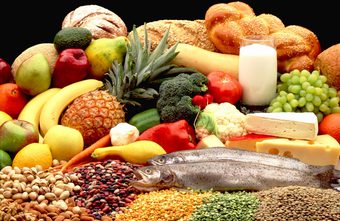Submitted by Dave Draeger, CDM, CFPP,
Director of Dietary and Dining Services
Maintaining a healthy body and preventing chronic diseases remains a common goal among most individuals. The general population attempts to eat well, maintain or lose weight and exercise with the hope of looking and feeling younger. Healthy diets have numerous names, come and go, are derived from various outlets, and address specific diseases. With this being said, most have common attributes, suggestions, guidelines, and tips that are similar in nature. Rather than dissect each diet I will provide a checklist for healthy eating by collaborating bits and pieces from all diets, fads, trends, etc.
- Eat more fruits and vegetables. These are great sources of vitamins and minerals. They are generally low in calories and rich in fiber. Most contain substances known to prevent diseases. It is recommended to consume 2.5 cups of vegetables and 2 cups fruit daily.
- Select whole grains and avoid refined grain products. Common options include oatmeal, brown rice and quinoa. It is suggested to eat 3 ounces daily with 50% coming from whole grains.
- Limit unhealthy fats and oils. Avoid animal based fats and oils and opt for plant fat and oils. Fats and oils that are solid at room temperature are commonly not healthy. Olive, canola and vegetable oils are popular. Positive fats and oils can also be found in nuts, seeds and salmon.
- Consume high quality protein sources, such as lean meat, poultry, fish, and eggs. Choose low fat dairy products. You can also try substituting legumes such as beans, peas and lentils for meat. Trim or remove visible fat prior to cooking meat. It is recommended to eat 3 ounces daily.
- Reduce sodium. Season foods with spices and herbs instead of salt. Typically canned and processed foods contain higher levels of sodium. A healthy adult should not consume more than 2,300 milligrams a day, about one teaspoon.
- Plan meals and treats ahead of going to the store. Create menus emphasizing fruits, vegetables, whole grains, lean meat and dairy, and strive for low fat, cholesterol and sodium options. Utilize farmer’s markets, food co-ops and local butchers for great healthy options.
- Control portion size. Most of us over consume the required calories needed. Check the food labels for portion size, weights, measurements and amount of nutrients.
- It is important to eat healthy food most of the time. No food should be off limits. Take to time enjoy meals, eat slowly and chew food completely to aid in digestion.
- Exercise routinely, 15 to 30 minutes daily is suggested to complement any type of diet plan. Get out of the house, find a non-food hobby, and avoid the kitchen, couch or recliner.
No specific eating pattern is meant to accommodate all individuals. Specialize your intake to feel comfortable. Adapt and change to promote a healthy lifestyle. With time a “new you” should appear.

